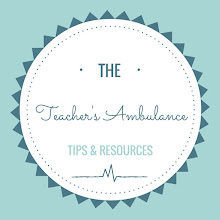 This is one of the most difficult tenses for
understanding by foreigners. Therefore, I’ve decided to provide some light into
this topic.
This is one of the most difficult tenses for
understanding by foreigners. Therefore, I’ve decided to provide some light into
this topic.
Several years ago, I have come up with wonderful
descriptive method how to explain this piece of grammar to the students.
Forms
Present Perfect requires help verb (auxiliary verb)
HAVE / HAS and main verb in the third form (Past Participle). You can teach the forms using the picture below.
Usage
Present Perfect can be applied in four different
situations. The student should understand and remember them. Therefore, every
time they face described examples (see below); it will be much easier to decide
on this tense. Believe me it works.
In general Present Perfect describes actions without
mentioning the time of it either it’s unimportant or unknown. Keep this in mind
all the time!
Situation 1.
What do we know from the sentence? Do we know the
exact time or date of the shopping? All we know that Jack has a new car. This
is it. This is Present Perfect. We do not speak about the act of purchase. We
speak about the result of it: Jack has a new car!!!
The rule: Present Perfect is used to describe
situations when action started in the past, (we don’t know when) and continues
till. (Jack bought a car maybe a week ago, but he has it now = Jack has bought
a car recently)
Situation 2.
Sarah has visited a wonderful place.
Likewise, it doesn’t give us any information when this
happened, but this situation differs by the meaning. Here we do not speak about
obtaining things but experience. So everything what you consider to be
experience (education, career, entertainment, etc.) should be said with Present
Perfect. You could ask why. Because, experience is what you gained once and it
stays with you for the
rest of your life!
rest of your life!
Situation 3.
They have just married.
The picture shows us the result. “Just” is an
indicator that the action took place only some time ago. Therefore, every time
these both indicators meet, you can use Present Perfect without any doubts. Here
you can study some other examples of this case:
I have just received your letter.
Matt has just finished his report.
She has just washed her car.
Situation 4.
I have sent twelve invitations today.
Here we also have indicators. They are today, this week,
this month, this year, etc. The main idea is that this period is not over and
the result can be changed by the end of the day, week, month or year.
Hope you enjoyed! If you have any questions, live it in a comment.












No comments:
Post a Comment